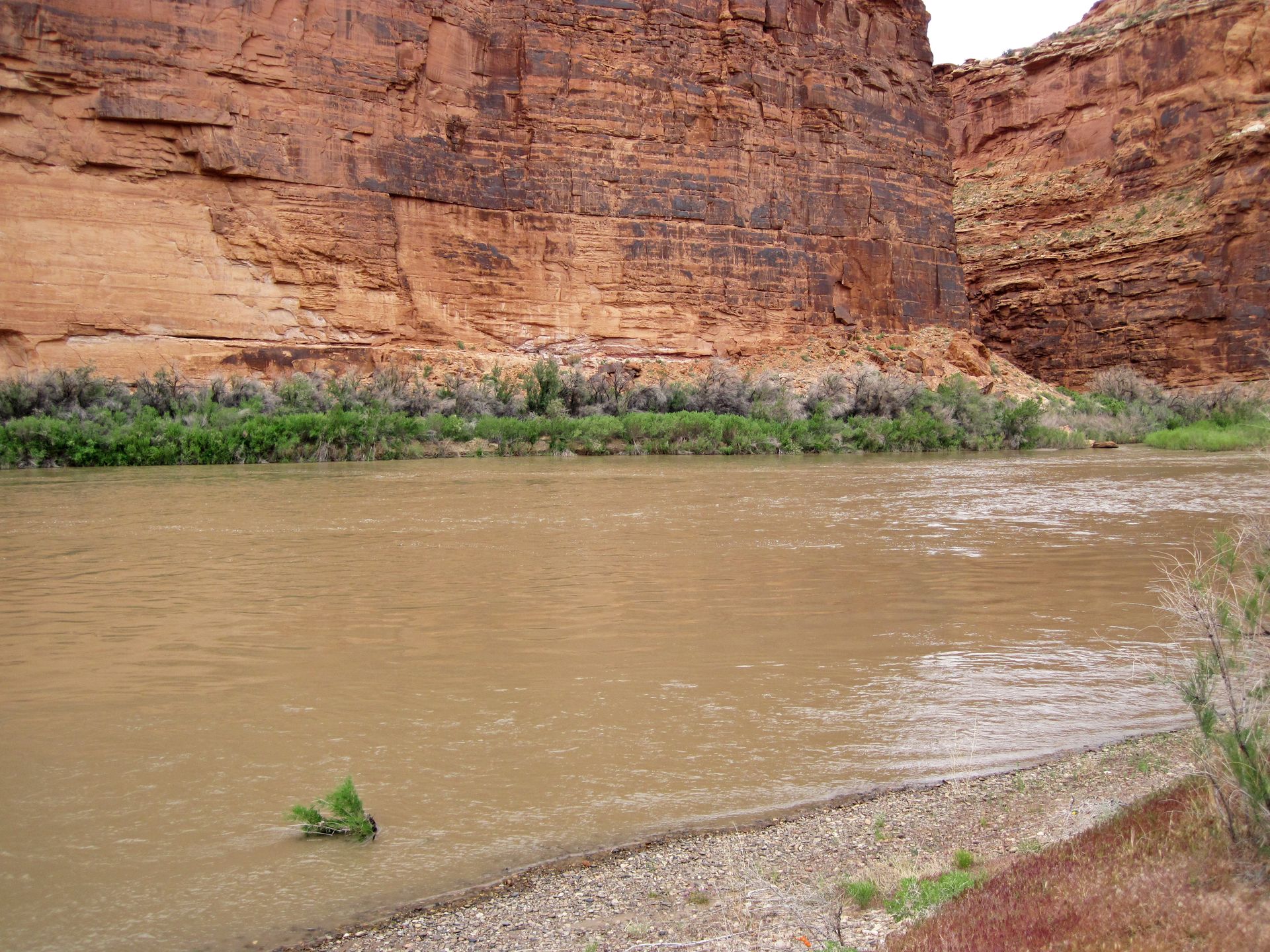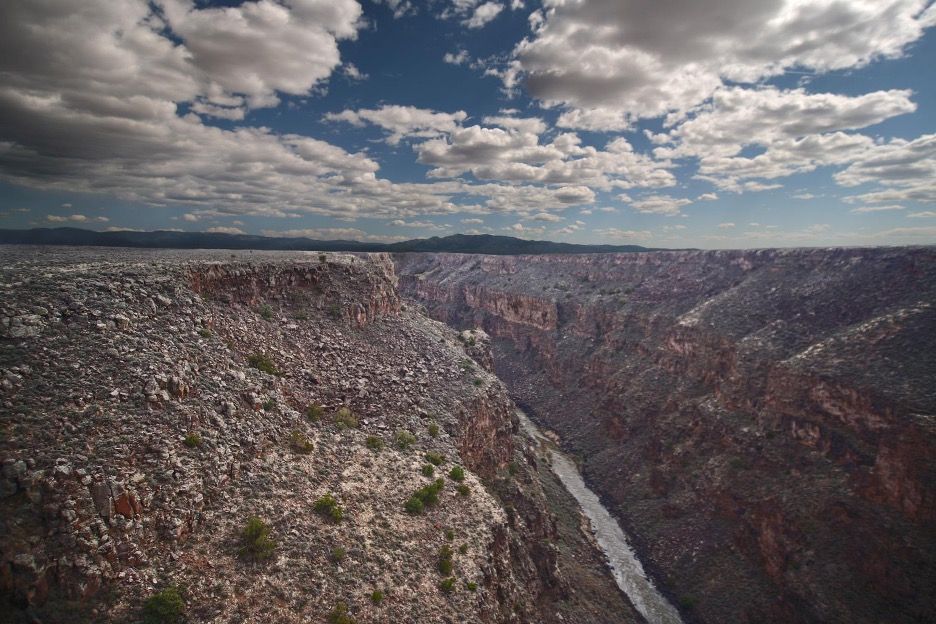1922 Colorado River Compact
The initial allocation of water established in the 1922 Colorado River Compact did not include tribal nations. As a result, water rights conflicts between the thirty federally recognized tribal nations that depend on the Colorado River Basin (“CRB”) for water, and seven U.S. states and numerous agricultural and municipal water agencies, have existed since the Compact’s inception. Now, over a century later, this issue persists, with 12 of the 30 federally recognized nations in the CRB facing unresolved water rights claims. While approximately twenty-five percent of the water from the basin is legally allocated to federally recognized tribal nations this percentage is likely to increase as other tribal nations’ claims await settlement. Although some Indigenous nations now hold legal rights to Colorado River water, many are unable to access it, due to insufficient water infrastructure, or to fully utilize it, due to restrictions on their ability to lease water to non-reservation users.
These issues compounded to create severe inequities for Indigenous nations in the region, which frequently experience a lack of access to clean running water, high water costs, and health disparities. Overcoming these challenges is important in its own right; however, any legal shifts in this domain also bear sweeping implications for Indigenous sovereignty. Two ongoing legal developments, offered here as case examples, illustrate challenges to securing Indigenous water
sovereignty. First, the Navajo Nation’s continued struggle to establish their water rights in the context of a recent Supreme Court ruling exemplifies the general disregard the federal government exhibits when accounting for tribal water needs. Second, the Colorado River Indian Tribes (CRIT) Water Resiliency Act demonstrates how attempts by the federal government to solve these issues perpetuate inequities and undermine Indigenous value systems. As undergraduate students eager to identify new approaches and opportunities for hope in American environmental law, we believe that respecting Indigenous water sovereignty and decision- making can help to not only solve the specific challenges that we identify, but also to indicate a potential path toward a new Western water law framework.
Arizona v. Navajo Nation
The experience of the Navajo Nation provides a more detailed look into both the legal opportunities and challenges that tribal nations face as a result of their contested sovereignty. Diné water rights are proving insufficient to supply the sprawling land area and population of the Navajo Nation. Moreover, much of the water that flowed within the Navajo reservation boundary has either been contaminated or depleted by uranium mining and oil drilling. And, although the
Colorado River borders the Nation for 76 miles, the Nation only has rights to the Colorado’s tributaries and streams, many of which have dried up.
In 2003 the Navajo Nation, struggling to come to a settlement with states, sued the federal government. Their primary complaint was that the government failed to fulfill its trust obligations under the 1868 Treaty to find and secure the Nation’s water rights on the Colorado River. After a decade of failed settlement attempts and intervening rulings, the Supreme Court agreed to hear the case. On June 22, 2023, Arizona v. Navajo was decided in a 5-4 opinion, authored by Justice Kavanaugh, which ruled that, “The 1868 Treaty establishing the Navajo Reservation did not require the United States to take affirmative steps to secure water for the Tribe. The Court ruled that the 1868 Treaty lacked explicit language affirmatively obligating the U.S. to secure Diné water rights, and it suggested that the Navajo instead seek redress through the legislative and executive branches, which could amend or ratify a new declaration of their rights. However, as others note, including Justice Gorsuch in dissent, the other branches of government have not taken action in over half a century. This arduous battle for water demonstrates the federal government's longstanding struggle to adequately recognize and secure Indigenous interests.
Despite this Supreme Court ruling, a recent development may mean that the Diné won’t have to wait much longer. As of March 1, 2024, the Navajo Nation announced that it is nearing the end of a settlement with Arizona to secure the water rights it has been seeking for over 100 years. This huge accomplishment—attained by the Diné persistence in protecting their rights—is just one success story among other nations that are still struggling to establish concrete water rights. In any case, this settlement should be seen as an opportunity for other nations facing similar challenges.
Colorado River Indian Tribes (CRIT) Water Resiliency Act
The CRIT Water Resiliency Act, passed by Congress in 2023, further exemplifies current challenges in tribal water sovereignty. The Act allows CRIT, a federally recognized tribe consisting of four distinct Tribes; the Mohave, Chemehuevi, Hopi, and Navajo, to lease its Colorado River water allocation to off-reservation users. The Act has been described as a small victory for tribal sovereignty, but it also has several limitations. First, it does not expand water rights to all Indigenous nations in the Colorado River Basin (CRB). Other nations outside of CRIT are still unable to lease their water and are subsequently missing out on a potential revenue stream. Many have argued that Congress should implement uniform legislation authorizing all nations in the CRB to lease their water rights to off-reservation users in accordance with the terms outlined in the CRIT Water Resiliency Act. Furthermore, although the Act expands the rights of four Indigenous nations by allowing water leasing, even those nations cannot attain full water sovereignty due to a lack of water infrastructure in reservations.
In addition to the unequal nature of CRIT, the Water Resilience Act has also engendered various additional concerns. First, some object to marketing tribal water rights, even where legally authorized, as commodifying water undermines its religious and cultural significance. Second, other nations oppose leasing water to non-reservation users because they worry the water could be taken permanently, even with contractual safeguards in place. Third, objections to water leasing include economic considerations. While off-reservation leasing can provide immediate revenue, on-reservation uses can employ more tribal members and generate secondary economic activity. These concerns are especially relevant because water settlement acts typically impose 99 or 100-year limits on leases that could constrain exercise of tribal water rights for several generations. Underlying these and other concerns is a deep distrust of the United States government, rooted in a long history of deceit and failure to recognize tribal rights.
The CRIT Water Resiliency Act reflects numerous shortcomings in its current approach to tribal water rights issues: it excludes a majority of tribes in the CRB, perpetuates inequities faced by the tribes, undermines Indigenous value systems, and requires individual tribes to expend resources in order to secure similar protections. Nevertheless, it also suggests several opportunities to reimagine CRB governance and more holistically incorporate stakeholders. As just one example, Manuel Heart, the Chairman of the Ute Mountain Ute Tribe in southwest Colorado, has discussed appointing a tribal representative on the Upper Colorado River Commission as a way to include tribal voices. Other spaces must be created to address tribal needs that have frequently been overlooked and facilitate cooperation between the U.S. government and tribal governments.
Indigenous Sovereignty in its Own Right
Arizona v. Navajo and the CRIT Water Resiliency Act highlight fundamental tensions in reconciling tribal resource rights. As climate change continues to worsen drought conditions, tribal water rights issues will be exacerbated. It is thus imperative that Indigenous nations are meaningfully included and consulted in future discussions on water rights and management.
The value of Indigenous sovereignty exists in its own right. Navajo Nation lawyer Bidtah Nellie Becker imagines this as an “organic sovereignty”, which she describes as ways in which communities organize themselves and relate to each other. According to Becker, this type of sovereignty exists regardless of any external designation of sovereignty, whether that be from another sovereign nation or a federal authority. In practice, sovereignty functions at the individual level and so Becker argues that “one of the greatest challenges to Navajo sovereignty is ourselves...are the choices that individual Navajo people make.” With this in mind, Becker opens the door to reconceptualizing Indigenous sovereignty as a powerful force for change within the community. Moreover, supporting tribal sovereignty through legislation opens the door for new approaches to water law. Allowing tribes to exercise self-governance over their resources can strengthen relationships between tribal nations and the federal government.
In the same way, establishing Indigenous sovereignty over their rightful water claims will likely bolster the protection of natural resources, including the Colorado River system. Native stewards of the land have managed and protected resources for millennia, generating place-based insights and leveraging Traditional Ecological Knowledge to promote balance and resilience. It is currently estimated that Indigenous Peoples, although representing 5% of the Earth’s population, protect 80% of its biodiversity. Therefore, as water scarcity in the Western U.S. becomes an increasingly pertinent issue, there are many reasons to seek more meaningful legal recognition of Indigenous sovereignty and value systems in the Colorado River Basin.
SOURCES
- Amy Joi O'Donoghue, Navajo Nation responds to Supreme Court water decision, The Deseret News, June 24, 2023 Saturday,
- Arizona v. Navajo Nation, 599 U.S. 555, 2023.
- Bidtah Nellie Becker, Sovereignty from the Individual Diné Perspective, in Navajo Sovereignty: Understandings and Visions of the Diné People 44–45 (2017).
- Colorado River Indian Tribes Water Resiliency Act of 2022, Pub L. No. 117-343, § 3308,
https://www.congress.gov/bill/117th-congress/senate-bill/3308/text
- Daniel Ross, Navajo Nation’s Shortage of Clean Water Is Impeding Efforts to Control COVID, TRUTHOUT (Aug. 7, 2020),
- Dig Deep, NAVAJO WATER PROJECT (Mar. 2, 2024),
https://www.navajowaterproject.org/.
- Fred de Sam Lazaro, How off-the-grid Navajo residents are getting running water, PBS NewsHour, PBS (June 20, 2018 6:20 PM EST),
https://www.pbs.org/newshour/show/how-off-the-grid-navajo-residents-are-getting-running-water.
- Jason Robison, Matthew McKinney, Daryl Vigil, and Asadulah Meelad, Article: Community in the Colorado River Basin, 57 Idaho L. Rev. 1, (2021),
- Mark Olalde and Anna V. Smith, Western States Opposed Tribes’ Access to the Colorado River 70 Years Ago. History Is Repeating Itself, PROPUBLICA, October 17, 2023
- Michael Elizabeth Sakas, Historically excluded from Colorado River policy, tribes want a say in how the dwindling resource is used. Access to clean water is a start.,COLORADO PUBLIC RADIO NEWS, December 7, 2021,
- Sarah Bohl Gerke, Navajo Reservation, ARIZONA STATE UNIVERSITY: NATURE, CULTURE AND HISTORY AT THE GRAND CANYON BLOG,
https://grcahistory.org/sites/beyond-park-boundaries/navajo-reservation/ (last visited Mar. 1, 2024)
- Samuel Joyce, Tribal Water Sovereignty: Authorizing Indian Water Marketing in the Colorado River Basin, 35 Stan. L. & Pol'y Rev. 165 (2024),
https://law.stanford.edu/wp-content/uploads/2024/02/JOYCE-FINAL-1-1.pdf.
- Sarah Krakoff, Inextricably Political: Race, Membership, and Tribal Sovereignty, 87 Wash. L. Rev. 1041, (December, 2012).
- Umar Farooq et. al, Supreme Court Keeps Navajo Nation Waiting for Water, PROPUBLICA (June 26, 2023),
https://www.propublica.org/article/supreme-court-navajo-nation-water-rights-scotus.
- USGS, Drought in the Colorado River, US Department of the Interior,
https://www.usgs.gov/special-topics/colorado-river-basin/science/drought-colorado-river-basin (last visited March 5, 2024).



